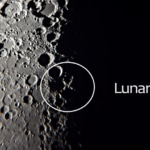What Is An Asteroid?
NASA is tracking a 1.2 mile wide asteroid making a near pass of Earth this week. But what are asteroids, anyway, and how did they get that name?
What Is An Asteroid?
An asteroid is the informal name given by astronomers to many of the tens of thousands of small celestial bodies that orbit our Sun. Asteroids are smaller than planets but larger than meteorites (which must be smaller than 10 meters, or about 33 feet, across). We explain the difference here. Unlike comets, asteroids maintain a predictable and comparatively circular orbit. Also unlike comets, asteroids lack a “coma,” a glowing tail formed by ice crystals sublimating into gas.
There are an estimated 45,000 asteroids in our Solar System and countless others in and beyond our own galaxy. The vast majority congregate in the “asteroid belt” located between the orbits of Mars and Jupiter.
Where Did The Term Asteroid Originate?
The word asteroid comes from the Greek term asteroides, which means “star-like.” Asteroids are also frequently called “planetoids.” Unlike planets, though, which become spherical due to their strong gravitational fields, asteroids tend to remain irregularly shaped.
What Is The Largest Asteroid?
The largest known asteroid is the dwarf planet Ceres, at 580 miles in diameter. Ceres resides in the asteroid belt, and makes up nearly a third of belt’s total mass. The first recorded sighting of Ceres took place in 1801, leading to the discovery of many other asteroids in subsequent years. Today, astronomers discover thousands of new asteroids each year, and catalog them for comparison among one another.
Many asteroids fall outside of the asteroid belt, and some even pass very near the Earth. Astronomers currently know of 7,075 “near-Earth asteroids,” approximately 1,000 of which are more than a kilometer in diameter. Some of these have struck the Earth. In fact, scientists believe prehistoric collisions with major asteroids may have caused several important geological events, including the mass extinction of dinosaurs and other creatures at the end of the Cretaceous period, 65 million years ago.
Asteroids with a diameter of one kilometer or greater enter the Earth’s once every 500,000 years, on average, making the likelihood of a serious impact in the near future very slim.

Jaime McLeod
Jaime McLeod is a longtime journalist who has written for a wide variety of newspapers, magazines, and websites, including MTV.com. She enjoys the outdoors, growing and eating organic food, and is interested in all aspects of natural wellness.






AMAZING shots and living breathing proof of a wonderful universe that is not fiction. I am excited to see MORE awe inspiring photos of the living universe!